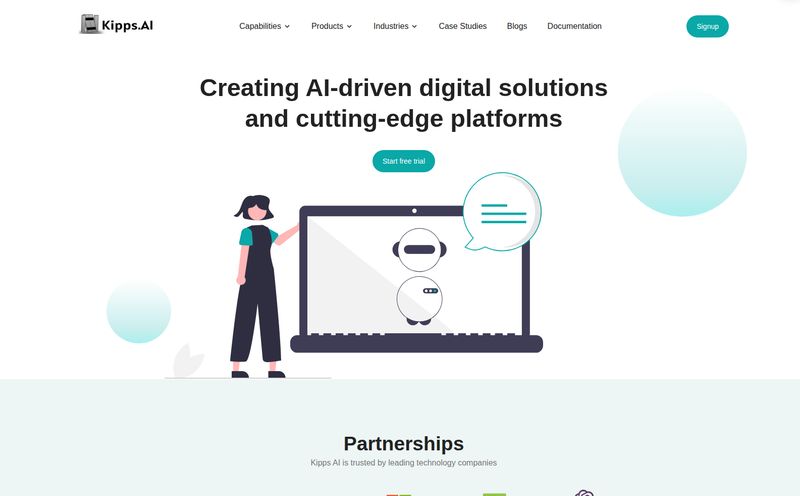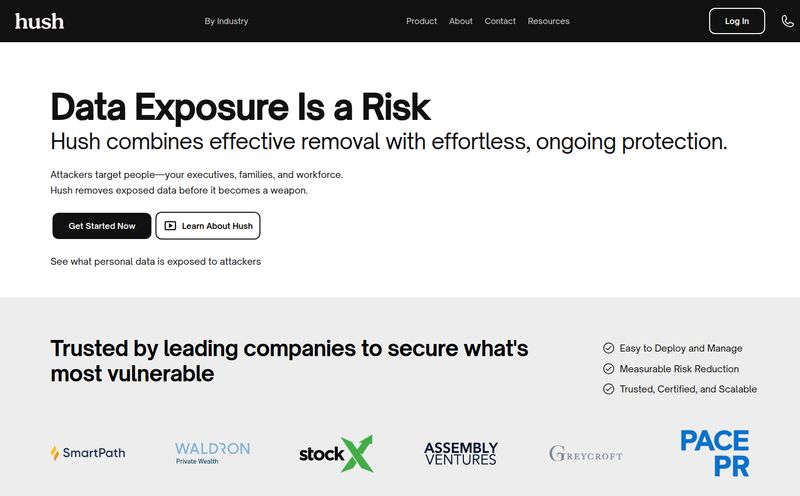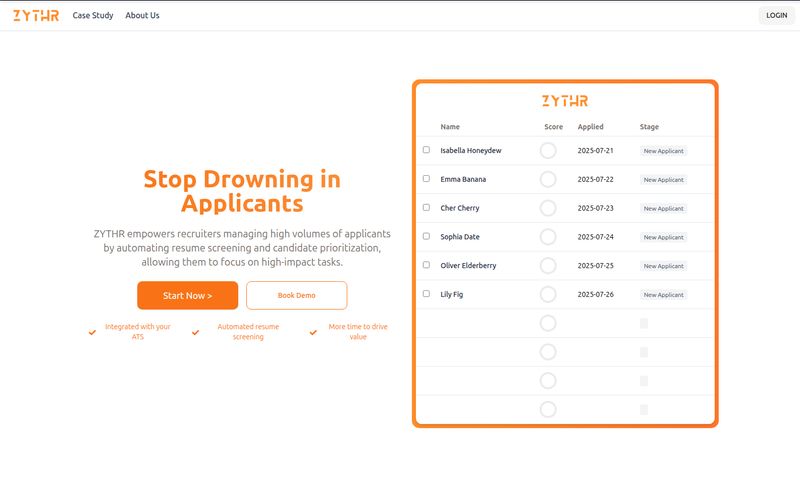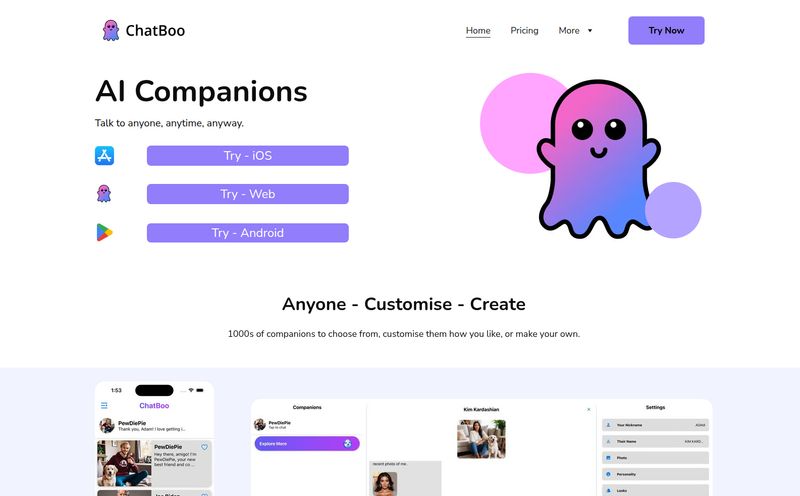I swear, if I see one more “revolutionary” AI tool land in my inbox, I might just pack it all in and become a goat farmer. Every single day, there's a new platform promising to change the game, to automate my life, to write my content, and probably to walk my dog. Most of them are… well, let's just say they’re shiny objects that lose their luster pretty fast.
Building a website has always been this weirdly painful process, right? I've spent more late nights wrestling with WordPress plugins and broken CSS than I care to admit. Then you have the drag-and-drop builders, which are great until you want to do something slightly custom and you hit a wall. So when I heard about yet another AI website builder, Pineapple Builder, my skepticism meter was cranked to eleven.
But the tagline wasn’t just “Build a Website Fast.” It was “AI Website That Grows Your Business.” That… that got my attention. As an SEO guy, growth is my entire world. So, I put my cynicism on a shelf, grabbed a coffee, and decided to see if this pineapple was actually sweet or just all core.
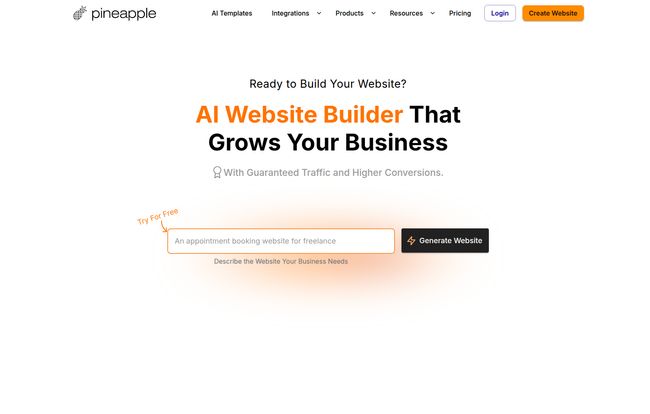
Visit Pineapple Builder
So, What Exactly is Pineapple Builder?
Okay, let's get the elevator pitch out of the way. Pineapple Builder is an AI-powered platform where you describe your business or idea, and it generates a website for you. We've heard that before. But the twist here is the emphasis on it being a complete solution. It’s not just a page designer; it aims to be your AI copywriter, your AI developer, and your AI marketer all rolled into one. You tell it you need a website for your new artisanal dog biscuit bakery, and it doesn't just give you a blank template. It attempts to build a functional, optimized starting point, complete with text, images, and structure.
They claim it’s a “one-click” process, which is great marketing speak. In reality, it's a one-click first draft. And honestly? That's what I want. I don't want a machine to make every single decision for me, but I'd love for it to handle the tedious 80% of the setup. It’s like hiring a junior developer to get the framework up so you, the expert, can come in and add the finishing touches. A pretty compelling idea for small businesses and solopreneurs who wear a dozen different hats.
Let's Talk About the Features That Matter
A tool is only as good as its features, so I took a good, long look under the hood. It’s not just about a pretty homepage; it’s about having the tools to actually run a business online.
The AI-Powered Core and the 'AI Team'
This is the main event. The AI generation is surprisingly decent. It pulls together a coherent design and writes copy that, while maybe not Pulitzer-worthy, is a hell of a lot better than the dreaded “Lorem Ipsum.” But the real gem is the ongoing “AI Editor & Developer.” You can ask it to make changes in plain English. “Make this section blue,” or “add a testimonial block here.” It’s a far more intuitive way to work than hunting through menus. This is what they mean by an “AI Team”—it feels less like software and more like a collaborator.
Built-in SEO and Blogging (The Part I Really Care About)
Here’s where I get critical. Any builder that doesn't take SEO seriously is a non-starter for me. I was pleasantly surprised here. Pineapple Builder’s FAQ section explicitly mentions that their sites are built with clean HTML, are mobile-first (a non-negotiable in Google's eyes since their mobile-first indexing update), and support sitemaps. These are the foundational blocks of good technical SEO.
Their Grow plan is specifically geared towards blogging and includes features for SEO keywords. This tells me they understand that a website isn't a static brochure; it's a living thing that needs content to attract traffic. Being able to manage blog post URLs is another small but crucial detail they got right. It's a solid foundation for any business that wants to get serious about content marketing.
Integrations and Business Tools
A website that's an island is useless. Pineapple Builder seems to get this. They have built-in analytics, which is great for beginners who might be intimidated by Google Analytics. They also have integrations with Stripe and Paddle for payments and tools like Mailchimp for email list building. This is huge. It means you can build a real business on this platform—sell products, offer services, and build an audience—without having to stitch together five different services with digital duct tape.
The All-Important Pineapple Pricing
Alright, let's talk money. We all want to know what this is going to cost. The pricing structure is refreshingly straightforward, and I think it's priced very competitively.
| Plan | Price | Best For | My Take |
|---|---|---|---|
| Starter | Free | Personal CVs, testing ideas | It’s a generous demo. You get a feel for the tool, but without a custom domain, it's not for a serious business. Perfect for a test drive. |
| Basic | $12 /month | Landing Pages, Simple Business Sites | This is the sweet spot for most small businesses just starting out. You get the custom domain, analytics, and payment integrations. Its a great deal. |
| Grow | $24 /month | Blogging, Content Marketing, SEO | If you're planning to use content to drive traffic (and you should be), this is the plan. The SEO features and unlimited blog posts make it a no-brainer. $24 is less than I spend on coffee in a week. |
The jump to the paid plans is where the real power is, especially with the ability to connect a custom domain. A business running on a `.pineapplebuilder.com` subdomain just doesn't look professional. For $12/month, the Basic plan is an absolute steal for what you're getting.
The Good, The Bad, and The AI
No tool is perfect. Let's be real. After playing around and digging through the details, here's my honest breakdown.
The Good Stuff
The speed is the biggest win. You can go from an idea to a live, decent-looking website in under an hour. For a startup trying to validate an idea, that’s insanely powerful. The all-in-one nature is another huge pro. Not having to worry about hosting, SSL certificates, or basic analytics lowers the barrier to entry significantly. And the no-code, conversational editing approach is genuinely innovative and user-friendly.
Potential Hiccups
The main drawback is the potential for a creativity ceiling. If you're a graphic designer or have a very specific, pixel-perfect vision for your brand, the AI-driven approach might feel restrictive. You're working within the AI's framework. While you can add custom code, that sort of defeats the purpose for the target audience. Also, the reliance on AI copy might not sit well with everyone. It's a great starting point, but you'll absolutely want a human (you!) to go over it to inject your brand's true voice and personality.
So Who is Pineapple Builder Really For?
I see a very clear customer for this. Solopreneurs, freelancers, and small business owners. People who need a professional, effective online presence yesterday and don't have the time to learn WordPress or the budget to hire a web developer for $5,000. It's for the consultant who needs a landing page, the new cafe that needs a site with their menu and location, or the startup that needs to launch an MVP site to test the market.
Who is it not for? Large, complex e-commerce stores with thousands of products. Big corporations with rigid branding guidelines and in-house development teams. And, as I mentioned, the pixel-perfect designers who want to control every single margin and shadow. This is about efficiency and effectiveness, not unlimited creative expression.
Conclusion: Should You Take a Bite of the Pineapple?
I came in skeptical, and I'm walking away… pretty impressed. Pineapple Builder isn’t just another shiny AI toy. It’s a thoughtful, well-designed platform that solves a very real, very annoying problem for a huge number of people. It successfully bridges the gap between being easy to use and being powerful enough to actually grow a business.
It won't build your entire business for you with a single click, and you still need a good strategy. But it will build you a damn good website, take care of the technical headaches, and give you a powerful launchpad. For the price, especially the Basic and Grow plans, it offers tremendous value.
If you've been putting off building a website because it feels overwhelming, I'd say give their free plan a spin. What have you got to lose? You might just find it's the tool you've actually been waiting for.
Frequently Asked Questions
- Can I use my own domain name with Pineapple Builder?
- Yes, you absolutely can! The paid plans (Basic and Grow) allow you to connect your own custom domain, which is essential for looking professional. The free plan uses a Pineapple subdomain.
- How good is Pineapple Builder for SEO?
- It’s surprisingly solid. The platform creates sites with clean code, they are mobile-responsive from the get-go, and it supports sitemaps—all things Google loves. The Grow plan adds specific tools for SEO keywords, making it a great choice for content-focused businesses.
- Does Pineapple Builder provide web hosting?
- Yep! All plans include web hosting and an SSL certificate. This is a big plus as it simplifies the whole process; you don't need to find and pay for a separate hosting provider.
- Can I add custom code to my website?
- You can. For those who are a bit more tech-savvy, there is an option to add custom HTML, CSS, or JavaScript code. This gives you a bit more flexibility if you need to embed a specific widget or make a custom tweak.
- Is it easy to collect emails or take payments?
- Definitely. It has built-in forms for collecting emails which can be integrated with popular services. For payments, it connects with Stripe and Paddle, two of the most trusted payment processors out there.
- What if I want to cancel my plan?
- They make it easy. You can cancel, upgrade, or downgrade your plan at any time directly from your billing page. There are no long-term contracts to worry about.
